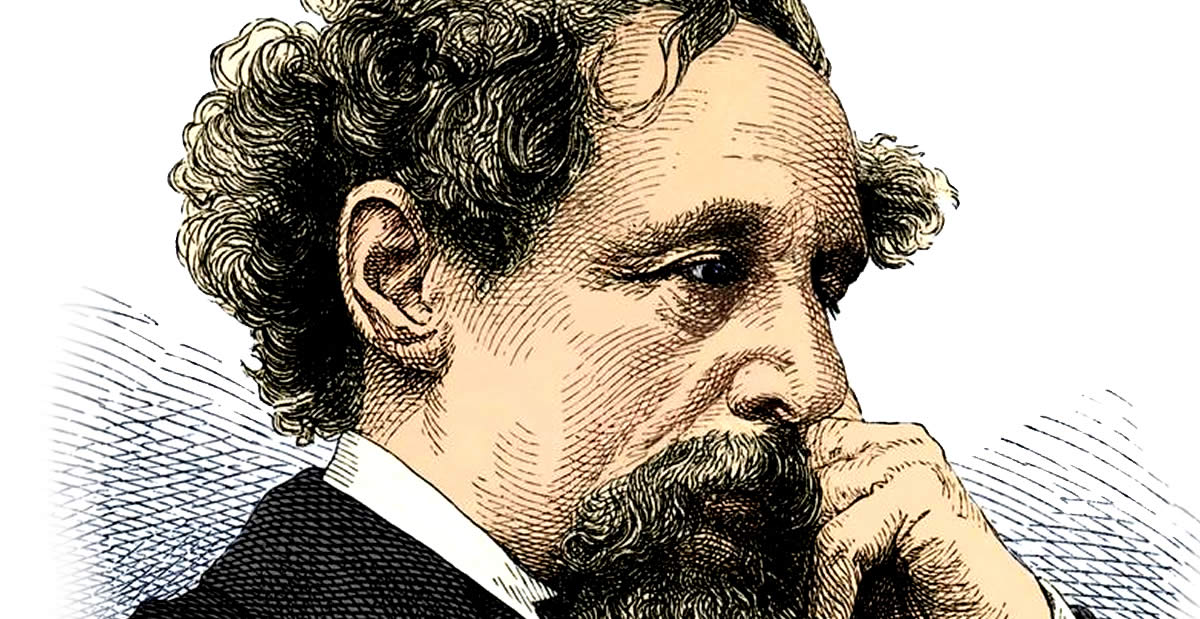Literature


The Secret Story Behind Charles Dickens, The Man Who Invented Christmas
The world might know him for his best-selling story, 'A Christmas Carol', but not many know about the epic struggle the author went through to have this classic tale published.
Imagine the following: Charles Dickens, writer, barely over 30 years old, well known in his profession by the local papers and colleagues alike, but not as widely known as he would have wanted to, decides his next book should be, in a word, different. His next book, Charles believes, should be a challenge. It should help him break free from his comfort zone.
He rushes with the idea into the offices of Chapman and Hall, his current publisher, whom after having a short meeting with the author and his story, decides against getting involved in such an act of lunacy.
As it turns out, Young Charles Dickens wants to tell a tale of Christmas.
But what Chapman and Hall ignores is that, in fact, this isn’t the first time Charles has thought about writing a Christmas story. He has been secretly working on a narrative that would warm the cold hearts of the British high society without recurring to political essays and is now finally sure to have gathered sufficient strength to test his ink against such an elusive muse.
Years before, in Pickwick Papers, Dickens tells the story of a cynical grave digger, one Gabriel Grub, who, through frightful visions presented by goblins on Christmas Even, is forcefully converted to benevolence before his soul get dammed to hell 1. He doesn’t knows exactly where yet, but he knows that somewhere in there, there is defenitelly a good story.
Armed with just a hunch, Charles Dickens sets himself to self-publish “A Christmas Carol” with borrowed money in exchange for a percentage of the profits.
Describing Charles Dickens as “the man who invented Christmas”, the renowed Welsh journalist, essayist and historian Byron Rogers writes: “In our dreams of the perfect pub it is always the 1830s, on the eve of the Railway Boom, with Christmas not far away. Christmas was never far from him. It is there in his first book and in his last, and for him each year the deadline came for the Christmas story, something he was to ruefully call clearing ‘the Christmas stone out of the road.’ Look at the cards on your mantle piece. Those without robins or shepherds have coaches, inns, ladies in muffs and jolly men in Hessian boots, all these because a young man froze Christmas for us in the 1830s. He was able to do that because for reasons of his own he had largely invented it.” 2
[…]inns, ladies in muffs and jolly men in Hessian boots, all these because a young man froze Christmas for us in the 1830s
Contrary to popular belief, Dickens found no significant problems writing the story. Let’s recall that, despite being portraited as a troubled author in popular culture, mostly because of his relationship with his father, Dickens was a professional writer and knew and loved and respected his craft as most professional artists do.
Before the end of November 1843, the story was finished. Chapman and Hall published the book in December of the same year. Since Dickens had paid for the publishing with his own money, he gave himself the luxury to be involved in every stage of the publishing process. From choosing the color of the cover to the engraved golden letters to the artist who immortalized old Ebenezer Scrooge; John Leech, perhaps the most famous illustrator at the time whose work includes the widely popular Punch Magazine.
A Christmas Carol was an instant hit, flying out entirely out of the bookstores in a matter of days. Sadly, for Dickens, the book was not a success. He had invested money from his own pocket to get it published and expected to receive at least £1,000 on the first 6000 copies but merely pocketed around £230 instead. The next year, despite still being one of the most critically acclaimed books in stores, his entire profits totaled £744.
How can we explain, then, that a man with the most successful book in London ended up struggling with money once again? Easy, Dickens’s choices for the book’s binding and illustrations were so expensive his earnings were diminished, something most self-published authors should also be aware of when publishing their work.
But what if Dickens didn’t choose to have the letters on the cover engraved in gold? What if he went for a stock cover instead of the beautifully one the first edition had? What would have happened if Dickens had decided against hiring Leech to illustrate the story? What would have happened then? Was Dicken’s book a tremendous success because of its timeless story? Or because of an author who madly loved his work to the extent that he invested in the last pound he owned to get the best possible quality for his creation?
There is no question that A Christmas Carol is one of the greatest tales ever written, but the weight of Dickens’ decisions when it came to publishing the book can’t be denied as an integral part of its success. That is the real secret behind the success of A Christmas Carol. Not the story, or the characters, or the ghosts of Christmas we all know and love. These, like we already saw, had been published in a similar fashion before, and by no other than Dickens himself. No, the secret behind its success lies in the circumstance in which the story was published. In the book itself. In the binding. In its illustrations. In the choice of paper and the way Dickens recommended booksellers to place his story on the windows.
The secret behind the man who invented Christmas is that first, he invented the success of the story.
